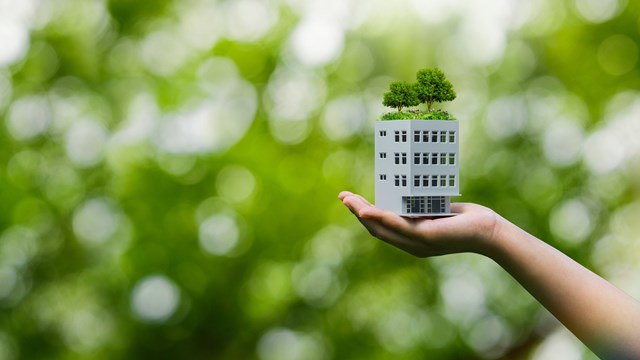If it weren't for the man-made boundaries, Bayside, situated on the northeastern edge of Queens, could be considered a Long Island town. Its manicured lawns; sometimes tasteful, sometimes gaudy home design; and the profusion of white kids going for the gangsta-hard thing would feel at home in the Five Towns (a grouping of Nassau County towns from Cedarhurst to Woodmere).
Fittingly: hop in the car and head east on Northern Boulevard from Bell Boulevard, and in less than five minutes, you're out of the city. Just like other suburban towns Bayside even has its own Inspiration Point in the romantic parking lot near Fort Totten. This little neighborhood has more than enough prime green space and opportunities for leisure activity, and more than a few nightlife options (though some are, admittedly, cornier than others). Bayside is also home to the one of the densest populations of city cops, firefighters, and service workers, and that helps it retain its "everybody knows everybody" feel—an increasing rarity in this city of strangers. With its consistently high-performing schools and low-crime streets, Bayside is rightfully felt by residents to be a great place to raise a family, suburb-style, without leaving the city.
From Farmland to Film Stars
Bayside's history dates back to 2000 B.C., when the Matinecock Native American tribe first settled there. In the late 17th century, the area was settled by English colonists. By the middle of the 18th century, early settlers left their homes in Flushing and developed a farming community, Bay Side. During the Revolutionary War, the Bayside-Little Neck area suffered from raids by sailors working on whale boats from the Connecticut shores. In one of the raids, the Talman house was attacked and the miller was killed. In the 19th century Bayside was still mostly farmland. By the middle of the 20th century urban sprawl, with the help of better roads, suburbanized it. During the 1920s, many actors and actresses, such as Rudolph Valentino and Gloria Swanson, lived in Bayside. It was known as the "it" spot, outside of the city. These wealthy residents had large waterfront estates and mansions, many of which still exist today.
The boundaries of Bayside are well-defined, the western boundary is Francis Lewis Boulevard and runs eastward to 223rd Street to the east. The southern boundary is the Grand Central Parkway and the northern boundary is Little Neck Bay.
Bayside is definitely car country since the subways don't reach out that far, but the Long Island Rail Road operates the Bayside Station, which will let you off just steps from Bell Boulevard and some of the area's better shopping, eating and drinking options. Many MTA buses also provide service to Bayside.
Local Landmarks
Among the main landmarks is the Lawrence Cemetery (at 216th Street and 42nd Avenue), where the founders of Bayside, as it were, can be found. The cemetery is also the final resting place of a slew of Lawrence family members, to whom the Dutch governor granted the land in 1645, as well as a former New York City mayor (Cornelius Van Wyck Lawrence, who held office from 1834 to 1837) and a half-brother of George Washington.
Cunningham Park, located in an area that was first settled by the ancestors of the Mantinecocks, spreads out across 358 acres and houses a vast expanse of green fields and thickly forested areas, as well as a large number of ball fields. During the warmer months, the New York Philharmonic, the Metropolitan Opera, and the Big Apple Circus draw huge crowds from all around Queens and Long Island. The bigger Alley Pond Park, at 655 acres, is the second largest in Queens, behind Flushing Meadows–Corona. There are 26 acres of playing fields, the Alley Pond Park Nature Trail, and a 23-acre bird sanctuary. In short, Bayside residents have more options and more green space available to them than the vast majority of New York City's residents.
Fort Totten, once a key to New York's defensive perimeter, is now little more than a vestigial army base, housing the 77th Regional Support Command, as well as the Old Fort, where more than 15,000 stone blocks were brought during the Civil War to construct the walls encasing a maze of tunnels, mine rooms, and torpedo rooms. The fort's museum tells of the area's rich history and affords a breathtaking view of the Throgs Neck and Whitestone Bridges over the area where the Long Island Sound meets the East River. The Cobblestone House, as it's informally known, at 35–35 Bell Boulevard, has just been designated a historic landmark this past October. The house is rumored to have been constructed of old cobblestones that used to line the city's streets and is a point of local pride.
Bell Boulevard is the “night-out-in-the-nabe” strip, where Baysiders and Nassau residents out to party "in the city" rub elbows over plates of comfort food or over beers at Maggie May's Pub; or grab some Cajun cuisine at Bourbon Street. And if you do stay out a little too late and have one too many pints, do not fear because there is a White Castle open 24 hours just off Bell Boulevard. Northern Boulevard is the main east-west artery, where you'll find plenty of other dining options, along with a plethora of car dealerships.
Bayside has been included in CNN Money's list of “Most Expensive Housing Markets,” and was also a contender for CNN Money's ranking of Best Places to Live 2005, and Best Places to Retire 2005. Large neighborhood homes predominate. Two-family homes range widely in price, from $550,000 up to $1.5 million, with price increasing the further north you go. Newly constructed two-family homes range from $850,000 to $950,000.
The rental market is concentrated mostly near the areas surrounding Northern Boulevard and Bay Terrace. Studios rent for $1,000 to $1,300; one-bedrooms, what few are available, go for $1,400 to $1,600; two-bedrooms rent for $1,600 and up.
Liam P. Cusack is associate editor of The Cooperator.







Leave a Comment